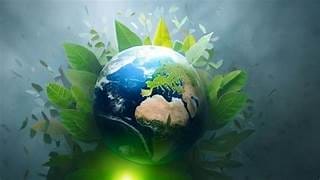Environmental Conservation: Protecting Our Planet for Future Generations
abril 1, 2025 2025-03-28 11:53
Environmental Conservation: Protecting Our Planet for Future Generations
Our planet is a magnificent and delicate system that sustains all forms of life, from the smallest insect to the largest mammal. However, in the past century, human activities have placed enormous pressure on the environment, threatening the resources and ecosystems that keep us alive. Environmental conservation is the effort to protect, preserve, and restore the natural world, ensuring that future generations can enjoy clean air, fresh water, fertile soil, and healthy biodiversity.
Environmental conservation involves the responsible management of natural resources and ecosystems to prevent exploitation, degradation, and irreversible damage. It includes actions aimed at protecting biodiversity, preserving natural habitats, sustaining natural resources such as water, soil, air, forests, and oceans, reducing pollution, and restoring damaged ecosystems. It is not about stopping human activity but about creating a balance between our needs and the planet’s ability to regenerate and sustain life.
Environmental conservation is important for several reasons. The first is the protection of biodiversity. Every species plays a unique role in the ecosystem. The loss of even a single species can disrupt food chains and entire ecological processes. Biodiversity is essential to maintaining healthy ecosystems that provide us with food, medicine, clean water, and climate regulation.
Additionally, conservation helps mitigate climate change. Forests, oceans, and wetlands act as carbon sinks, absorbing carbon dioxide and regulating global temperatures. Deforestation, pollution, and unsustainable practices increase greenhouse gas emissions, leading to global warming.
Preserving natural resources is also crucial. Clean water, fertile soil, and fresh air are finite. Without conservation efforts, overconsumption and pollution could deplete these essential resources, leading to water shortages, food insecurity, and health crises.
Another key aspect is supporting economic sustainability. Many industries, such as farming, fishing, tourism, and medicine, depend on a healthy environment. Conservation ensures that these industries can continue to thrive without depleting the natural systems they rely on.
Lastly, conservation protects future generations. It is an investment in the well-being of children and grandchildren, ensuring they can enjoy the natural beauty and resources we have today.
There are multiple environmental threats that make conservation necessary. These include deforestation and habitat destruction, air and water pollution, overfishing and depletion of marine resources, plastic pollution and waste accumulation, soil erosion and desertification, climate change, illegal wildlife trade and poaching, and overpopulation accompanied by unsustainable consumption.
To address these threats, various conservation methods have been implemented worldwide. One of them is the creation of protected areas and natural reserves. Governments and environmental organizations designate national parks, marine reserves, and wildlife sanctuaries to protect ecosystems and endangered species.
Another strategy is sustainable resource management. Promoting the responsible use of natural resources, such as sustainable fishing, eco-friendly farming, and renewable energy, helps reduce environmental damage.
Reforestation and afforestation are also fundamental. Planting new trees and restoring destroyed forests improves air quality, provides habitat for wildlife, and helps mitigate climate change.
Pollution control and waste management are essential to reduce contamination. Reducing emissions, recycling, managing hazardous waste, and limiting the use of plastic products are key practices.
Environmental laws and policies also play an important role. Governments enforce regulations to protect the environment, such as the Paris Agreement on Climate Change and national wildlife protection acts.
Education and awareness are powerful tools. Informing and empowering people and communities about the impact of their actions helps generate positive change.
In addition, community-based conservation ensures that the people living close to natural resources participate in their protection and benefit economically and socially from these actions.
But conservation does not depend only on governments and organizations; every person can contribute. Some practical actions we can all take include reducing, reusing, and recycling to minimize waste; saving energy and water by turning off lights and devices when not in use and reducing water consumption; supporting eco-friendly and sustainable products; choosing sustainable transportation such as walking, cycling, or public transport; planting trees; participating in clean-up campaigns and environmental education; and supporting organizations working for environmental conservation.
Over time, conservation efforts have yielded positive results. The recovery of the bald eagle in the United States, once endangered due to hunting and pesticide use, is a successful example. Restoration projects in the Amazon rainforest are replanting millions of trees to combat climate change. Marine protected areas, such as the Great Barrier Reef Marine Park, help preserve coral reefs and marine biodiversity. Global climate agreements like the Paris Agreement represent a joint effort to reduce carbon emissions and limit global warming.
These success stories demonstrate that when governments, organizations, and individuals work together, positive change is possible. Environmental conservation is not an option; it is a necessity. The health of our planet is directly linked to our survival, prosperity, and happiness. As stewards of the Earth, it is our responsibility to use its resources wisely and protect its ecosystems from harm.
Whether through small daily actions or large global initiatives, every effort counts. The choices we make today will shape the world future generations inherit. Together, we can ensure that the beauty, diversity, and life-sustaining power of our natural world endure forever.
Related Posts
Environmental Conservation: Protecting Our Planet for Future Generations
abril 1, 2025 2025-03-28 11:53Popular Tags






























